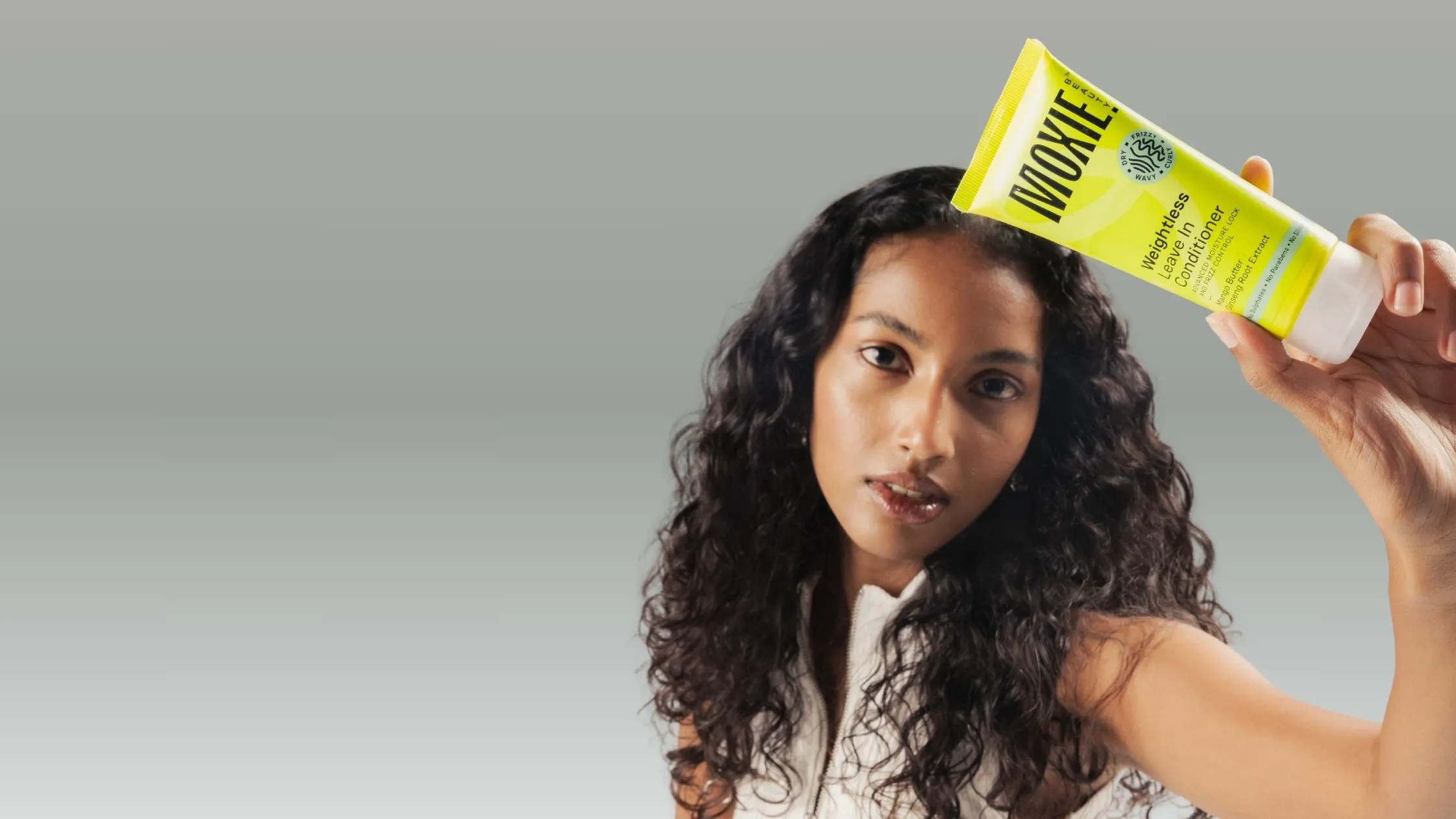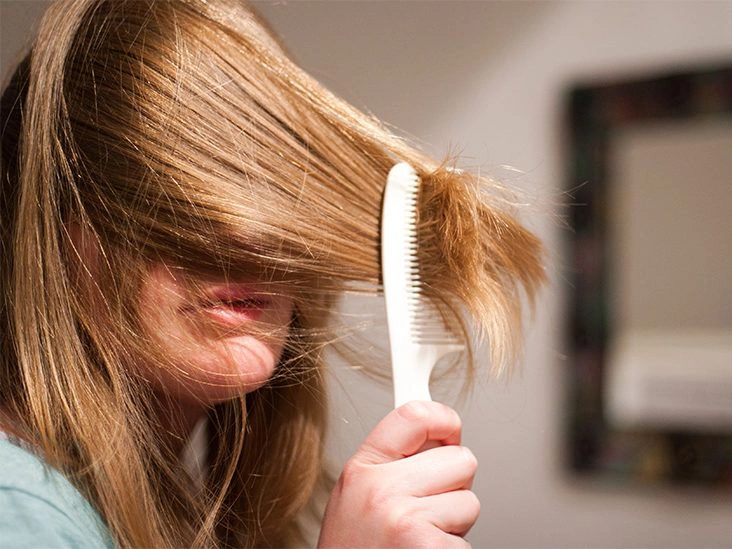Leave-in conditioners — sometimes called no-rinse or leave-on conditioners — are applied after shampooing and before you style your hair. They’re typically used on towel-damp hair.
Unlike rinse-out conditioners, leave-ins are not washed away. These products add extra hydration, shield strands from harm, and make detangling easier.
Almost all hair types — from straight to curly, natural to color-treated — can benefit from a leave-in, but they’re especially useful for dry, damaged, or frizzy hair. They’re also helpful if you frequently use heat tools like flat irons or curling wands.

How to use leave-in conditioner
Apply leave-in conditioner after shampooing. It can take the place of the conditioner you’d normally use in the shower, though you can use both if your hair is very dry or damaged.
For best results, apply the product when hair is still damp. Follow the steps below, and always check the instructions on the bottle:
- Wash your hair with shampoo and rinse thoroughly.
- You may apply a regular rinse-out conditioner in the shower, but be sure to rinse it out completely.
- After stepping out of the shower, gently blot your hair with a towel to remove excess moisture.
- Dispense a small amount of leave-in conditioner (according to the product directions) and work it through your hair.
- Use a brush or comb to remove tangles and distribute the product.
- Allow your hair to air-dry or style it as you normally would.
The routine is largely the same for different hair textures. People with thicker hair may need a larger amount of leave-in product than those with fine hair.
A wide-tooth comb helps spread the conditioner more evenly for curly or dense hair. If your hair is very fine, consider applying the product mainly to the ends to avoid weighing the roots down.
How often to use leave-in conditioner depends on how your hair responds. If daily use leaves your hair looking healthy, continue. If your hair becomes greasy or limp, reduce frequency.
Benefits of leave-in conditioner
The primary advantage of leave-in conditioner is enhanced hydration, which supports overall hair health. Most hair types can gain from using a leave-in. Here’s how it helps different concerns:
Dry hair
People with dry hair stand to gain the most, as leave-in conditioners restore needed moisture. Persistent dryness can lead to brittleness, frizz, and breakage.
If the ends are especially parched, focus the product there.
Frizzy hair
Frizz is commonly linked to dryness. Even with careful hair care, frizz may increase in humid, hot, or very dry climates, or from prolonged sun exposure.
Leave-in conditioners add moisture and help smooth the hair, reducing frizz. By coating the strands, they also offer some protection from sun and environmental stressors.
Damaged hair
Heat styling, bleaching, dyes, chemical straightening or perms, and frequent tight hairstyles can all damage hair, leaving it dull and frizzy. A leave-in conditioner can protect hair when applied before styling or using heat tools, while restoring moisture to stressed strands.
Coarse or curly hair
Curly, coarse, and textured hair often benefit from the extra hydration of a leave-in. Because natural scalp oils take longer to travel down curly strands, curls are more prone to dryness and need added moisture.
Applying leave-in conditioner and combing it through the lengths can make curls look healthier, better defined, and less frizzy.
Bleached or color-treated hair
Color-treated or bleached hair is frequently damaged. Choose a leave-in formulated for colored hair to help preserve shade and boost shine.
Fine hair
Fine hair can feel weighed down by conventional conditioners. Leave-in conditioners are usually lighter, offering hydration and sheen without excessive heaviness.
Consider substituting a rinse-out conditioner with a lightweight leave-in. If your hair is particularly fine or limp, apply mainly to the ends.
Difference between traditional and leave-in conditioners
Unlike rinse-out conditioners used in the shower, leave-in conditioners are usually formulated to be lighter so they don’t weigh hair down. Rather than forming stiff bonds, they help detangle and make styling easier, which is why they’re commonly applied just before styling.
Precautions and potential side effects
Leave-in conditioners carry a few potential risks.
Allergic reactions to ingredients are uncommon but possible. If a product causes irritation or a burning sensation on the scalp, rinse thoroughly and stop using it.
Avoid contact with the eyes; if it gets in the eyes, flush with cool clean water.
If you are prone to facial acne, try not to get leave-in conditioner on your skin.
Those with naturally oily hair that tends to accumulate product buildup may want to avoid leave-ins. Oily hair can coincide with low porosity hair, which is denser, oils don’t spread as easily, and drying takes longer.
How to pick leave-in conditioner
With many choices available, picking the right leave-in can feel overwhelming. Generally, avoid products containing alcohol or artificial dyes, as these ingredients can cause dryness.
Common ingredients in leave-ins include silicones (like dimethicone) and glycerin, which protect and coat the hair without heavy buildup. Many formulas also include natural oils, plant extracts, and vitamins.
Start by identifying your hair type — is it curly, straight, fine, thick, damaged, or color-treated? Many leave-ins are tailored to specific hair concerns, so read labels before purchasing. As a guide:
- If you use hot tools, choose a product offering heat protection.
- If you color your hair, select a formula designed to preserve color.
- For fine hair, look for a lightweight or volumizing leave-in.
- For curly hair, choose a creamy leave-in rich in natural oils.
Where to get leave-in conditioner
Leave-in conditioners are widely available at drugstores, supermarkets, beauty supply shops, and online.
Shop for leave-in conditioner online.
Takeaway
Leave-in conditioner can be a useful addition to your hair-care routine to boost moisture and ease detangling. It’s particularly helpful for dry or damaged hair and for those who use heat tools, bleaching agents, or chemical treatments that can compromise hair health.


















Leave a Reply
You must be logged in to post a comment.